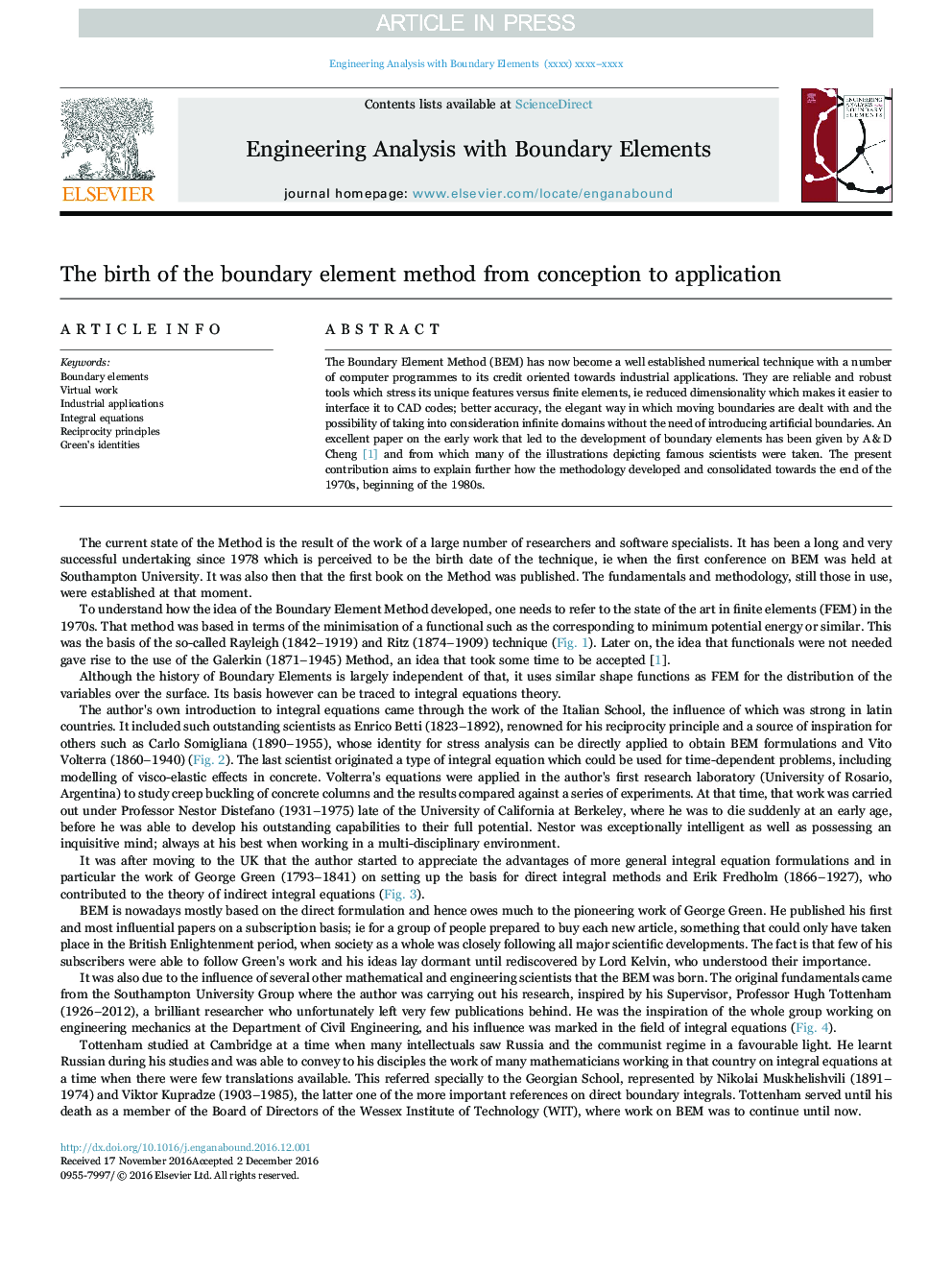| Article ID | Journal | Published Year | Pages | File Type |
|---|---|---|---|---|
| 4966082 | Engineering Analysis with Boundary Elements | 2017 | 8 Pages |
Abstract
The Boundary Element Method (BEM) has now become a well established numerical technique with a number of computer programmes to its credit oriented towards industrial applications. They are reliable and robust tools which stress its unique features versus finite elements, ie reduced dimensionality which makes it easier to interface it to CAD codes; better accuracy, the elegant way in which moving boundaries are dealt with and the possibility of taking into consideration infinite domains without the need of introducing artificial boundaries. An excellent paper on the early work that led to the development of boundary elements has been given by A&D Cheng [1] and from which many of the illustrations depicting famous scientists were taken. The present contribution aims to explain further how the methodology developed and consolidated towards the end of the 1970s, beginning of the 1980s.
Related Topics
Physical Sciences and Engineering
Computer Science
Computer Science Applications
Authors
Carlos A. Brebbia,
